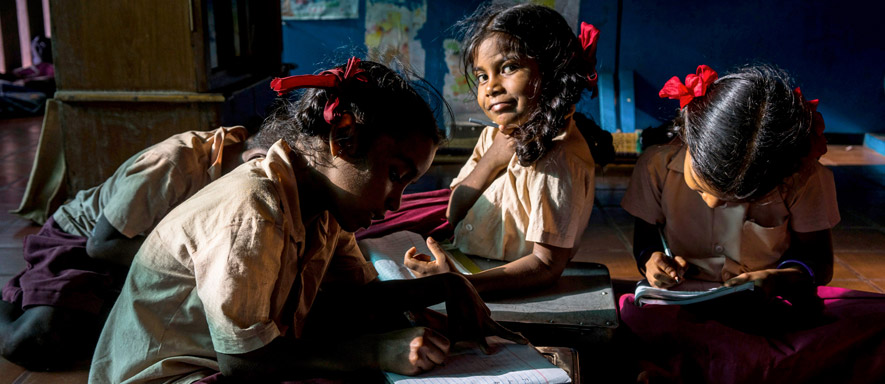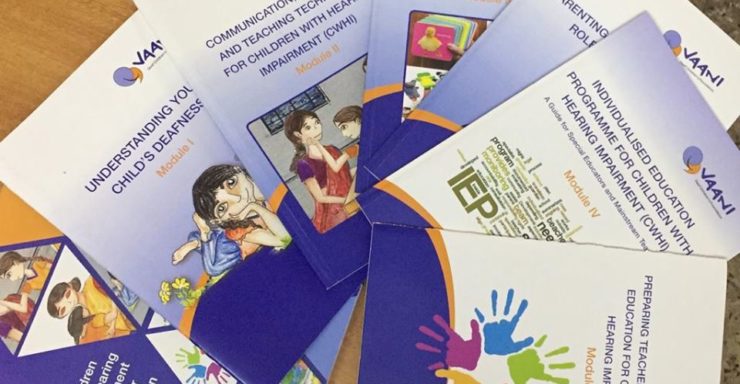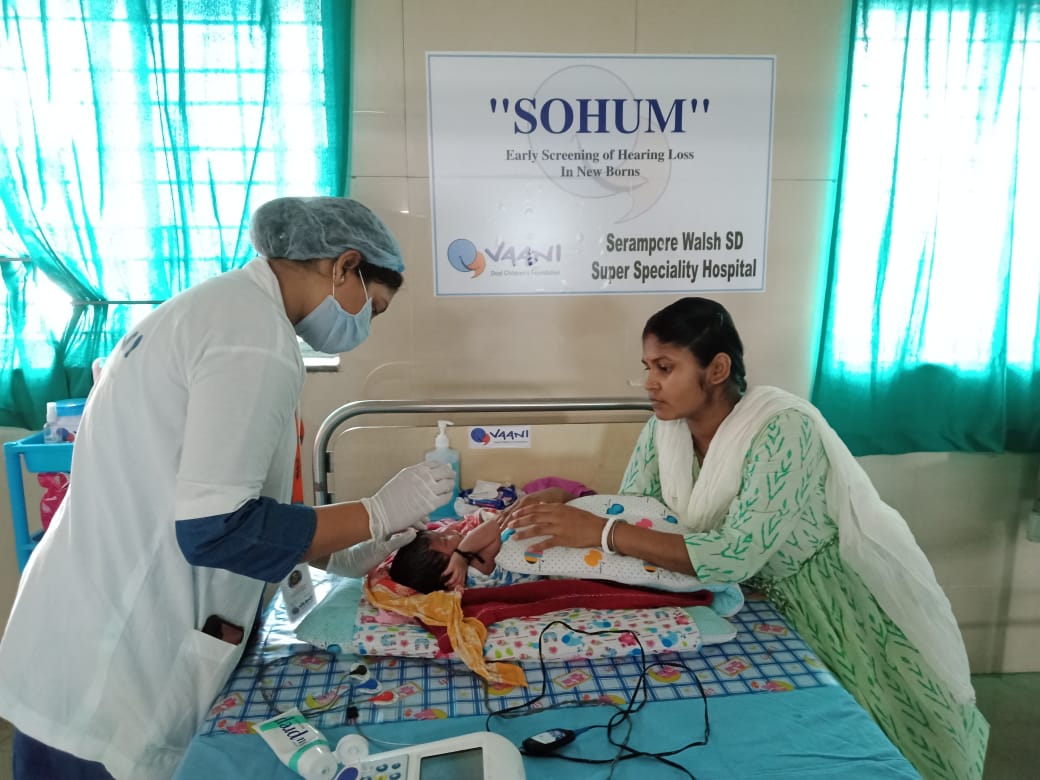Bringing knowledge and experience among the regular citizens on ‘Childhood Deafness’.
The idea is to create a movement of leaders that collectively help solve the problem of inequalities in access to communication and language for deaf children and give an integrated and holistic view of meaningful engagement for deaf kids.
Sadhan Resource Centre
Based on our experience over the last 10 years, we have developed a model to effectively deliver our technical expertise. We call it the Sadhan Centre.
VAANI reaches the deaf children and their families directly through Sadhan Centres – a model best practice demonstration center extending early intervention services for the development of deaf children and infants in developing communication, language and literacy skills and measuring their impact .
- Provide information on issues around childhood deafness to families of deaf children and professionals who work with deaf children.
- Provide assessment facilities for early identification of deafness in babies/children under 5 years of age.
- Provide information and appropriate support for identified deaf children.
- Provide additional educational support to school-going deaf children.
- Provide a space for family members of deaf children to meet and share experiences.

One of the main activities in the Sadhan Centre is the Individual Education Plan (IEP) Sessions.
Individual Education Plan (IEP) for Identified and referred deaf children are prepared for each one after an assessment of the child’s needs. This is done in the presence of the guardian – usually the mother.
Each child visits the resource centre once or twice a week depending on the needs that have been listed.
To monitor the progress of these children records maintained are:
- Attendance registers to monitor their schedules
- The IEP record of individual children to record progress is updated
- Family follow-up book
The resource teacher and the mother go through the follow-up book which also has a record of the home-work that the mother is supposed to do with the child. A typical session with a parent and child goes on for 1 and a half hours – 15 minutes on communication exercises, 1 hour on working with text books to supplement school studies for the child and the last fifteen minutes to discuss the plan for activities till the next visit.
With enough room for changes to the IEP and techniques used for working with the child, depending on the child’s grasping ability and frequency of attendance, the progress is constantly monitored by both the mother and the teacher. This is participatory monitoring at its best, and the system really ensures the best services for the young deaf child. Along with indicators along the way to measure success, the short-term and long-term goals are also spelled out and everybody involved is aware of the status of the progress at all times.

